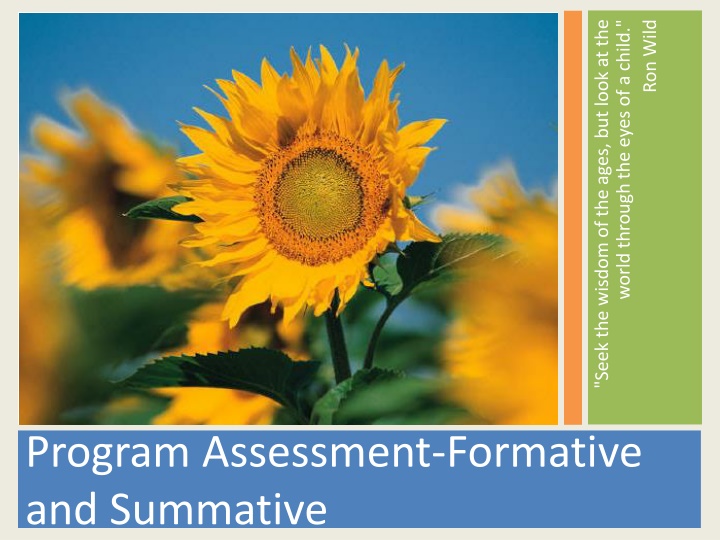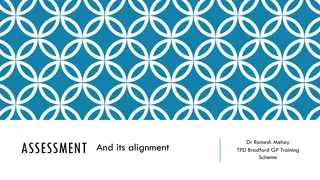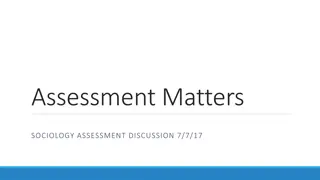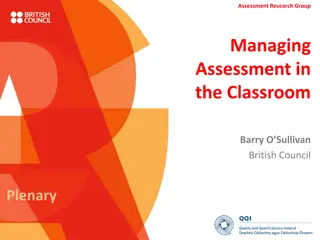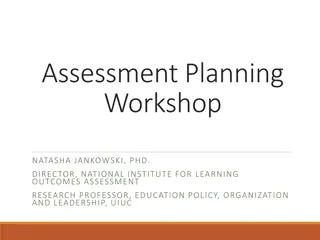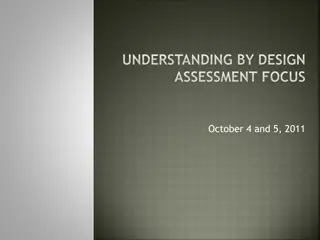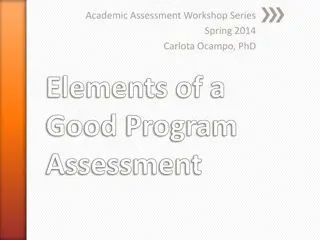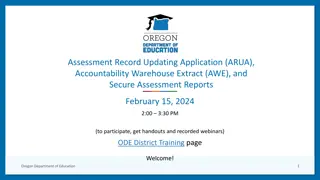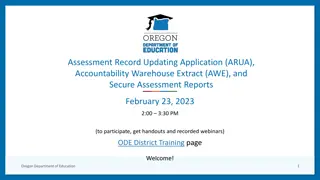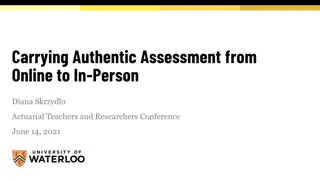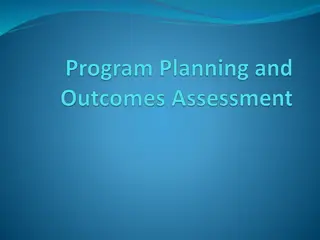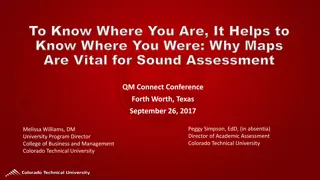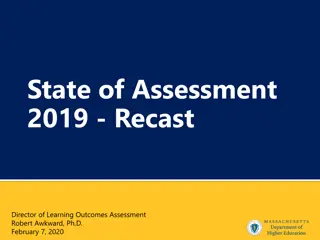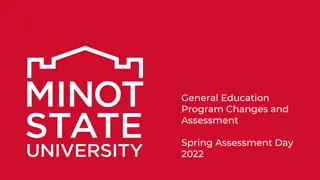Program Assessment for Effective Education
This comprehensive program assessment involves measuring progress towards goals, evaluating activity effectiveness, and tracking program changes over time. Utilizing data reports and evaluation strategies, the process aims to enhance educational outcomes and ensure continual improvement. The assessment covers various aspects such as student attendance, demographics, academic achievement, and staff feedback, empowering stakeholders to make informed decisions and optimize educational initiatives.
Download Presentation

Please find below an Image/Link to download the presentation.
The content on the website is provided AS IS for your information and personal use only. It may not be sold, licensed, or shared on other websites without obtaining consent from the author.If you encounter any issues during the download, it is possible that the publisher has removed the file from their server.
You are allowed to download the files provided on this website for personal or commercial use, subject to the condition that they are used lawfully. All files are the property of their respective owners.
The content on the website is provided AS IS for your information and personal use only. It may not be sold, licensed, or shared on other websites without obtaining consent from the author.
E N D
Presentation Transcript
"Seek the wisdom of the ages, but look at the Ron Wild world through the eyes of a child." Program Assessment-Formative and Summative
Purposes of Program Assessment Measure overall progress toward goals and objectives. Measure effectiveness of activities or programs for particular groups of students/youth Measure incremental progress toward particular objectives. Measure changes in the program over time.
Federal Reporting Profile and Performance Information Collection System (PPICS) Input: Student attendance, demographics, center staffing, cumulative teacher survey data, cumulative assessment data, individual activity information all reported by center for each cohort Output: Full APR report by Cohort, 6 other reports comparing subgrantee data, and over 30 detail reports available at the center level Who Uses the Data Reports: US Dept of Education, Wyoming Department of Education, local programs, general public (public reports at subgrantee and state level only)
Fusion Data System Input: WISERids, attendance and teacher survey data Output: Annual Report for each Cohort with population served demographic information, disaggregated academic achievement information for MAP and PAWS (also .DIBELS, if entered into Fusion), and growth data from the previous year, summary of teacher survey, and data highlights Who Uses the Data Reports?- Wyoming Department of Education, local programs
Required Local Evaluation Information provided to WDE yearly in renewal applications or closeout reports. Positives-Allows individualized approach to evaluation Challenges- paper-based so difficult to aggregate data, no standard for quality, no evidence required that data was used for improvement
Moving Forward With Local Evaluation Potential Strategies Require all subgrantees to use the same tools for summative evaluation but not for formative evaluation processes. Require all subgrantees to use the same tools for formative processes and summative evaluation. Contract with a provider to design and carry out a local evaluation process to be used for all subgrantees using currently collected data and additional local quality data. Other ideas ..
Using the Program Evaluation Summary as a starting point, please discuss in your group what an ideal local evaluation would look like. Describe what you need to communicate with staff to reach goals (measured throughout the year) and what you need to communicate with boards, community groups and future funders. Please include specifics about format of the data, analysis information, etc.
